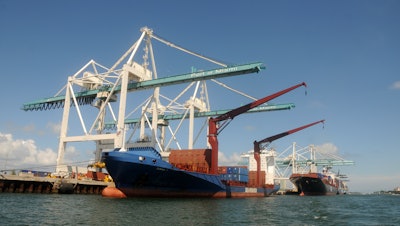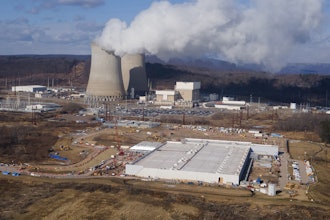
If the past five years have taught the world anything, it’s that global disruptions to supply chains can happen anywhere, anytime.
From social disruptions, such as the recent pandemic, to political conflict, to labor disputes and environmental disasters, there are plenty of incidents that can impact the flow of materials, goods and products. The nature of our globalized systems means that no manufacturer is immune to the impacts of these disruptions.
A growing priority trending among manufacturers is to implement tech systems that enable companies to stay on top of risks and react quicker to the unexpected. Using the power of the cloud, cyber security measures, artificial intelligence and integrated digital platforms, manufacturing companies can harness the power of business technology to make their supply chains more resilient to disruptions.
Common Supply Chain Risks and Challenges
There are several common risks in any supply chain, whether the chain spans a localized region or a global one. Companies that think ahead can plan to mitigate many of these risks with alternative sourcing options, but many of the risks are unpredictable in scale and location. Most of these disruptions have played out in the past few years, teaching the manufacturing sector valuable lessons on how to better manage these risks in the future.
Here are a few examples of supply chain disruptions from the news in recent months:
Disruptions in Resource Availability
All products and components require raw resources in one state or another. If a resource, such as rare earth metals, becomes scarce or the countries where they are found refuse to export them, it will impact the supply chain for in-demand technology. Any company that makes or produces a product that uses those metals or components will be affected. While there may not be a feasible alternative material to choose from, companies will need to decide how to manage the shortage and others similar to it.
Disruptions Caused By Political Factors
A political scenario can easily disrupt the distribution of supplies due to political conflicts, sanctions between countries, barriers in the form of trade agreements, rising tariffs and more. The more countries that a supply chain crosses, the higher the risk for political factors impacting the system. Companies can not control this risk, but they can monitor international situations and make plans in advance when signs of turmoil appear. Political disruptions usually come with warning signs and rarely happen overnight.
Disruptions Due to Environmental Impacts
Supply chains can be disrupted by something as simple as inclement weather. When trucks can’t pass on certain routes due to road conditions, delays will ensue. This type of risk might be short-lived in some situations and not impact the bigger picture for producing and launching products, but the opposite can also be true. Natural disasters or severe weather situations can disrupt shipping routes for a longer period or cause a backlog at port locations. These disruptions can have more significant impacts on timelines.
Managing Risks with Business Technology and Software
There are many more factors that can disrupt global supply chains than mentioned above, but the main issues are clear. Knowing where the vulnerabilities in a supply chain are, having plans in place to mitigate potential risks, and communication throughout an organization is key to handling risk and preventing losses where possible. The following business technology solutions are helping manufacturers do just that.
Supply Chain Management Software
Manufacturing supply chains are complex systems that require robust platforms to manage them. Supply chain managers must also be trained to monitor and manage these systems to use them to their full capacity.
Supply Chain Management (SCM) software should have features that make it easier to manage the following aspects of the chain:
- Order processing
- Inventory
- Warehouses
- Transportation
- Sourcing and supply
Robust SCM systems will also include technical features that make management more efficient and secure, as well as collaboration features to produce reports that can be shared with other teams.
Customer Relationship Management Software
Manufacturers know that they need to be in tune with their customer base, including knowing their pain points, mapping their needs, and discovering what they truly want from products. Customer success teams conduct surveys, and questionnaires, host focus groups, and test products on the ideal customers to gather this data, which will inform product decisions. Once this information is compiled, analyzed, and sorted, it can also be shared with other branches of the company.
When deciding which products to keep, which ones to improve, and which new ones to invest in, accurate customer data is essential. Customer success teams need to communicate with both their product development teams to provide them with the information needed to plan new product launches. Customer relationship management (CRM) software allows teams to compile their data in a centralized location where they can easily share it with other departments to find cross-collaborative solutions.
Product Roadmap Management Software
In most cases, manufacturing companies that use both SCM and CRM software are also using some time of product roadmap management software for manufacturing because they value having transparency throughout their organization. Building on the data SCM and CRM can provide their managers, product roadmap management software provides a clear picture of all the products in any given market, along with the components required for each product and the dependencies in each stage of development.
Collaborations Lead to Better Decisions
As concerns over disruptions to the supply chain occur, managers can share data and collaborate on the best next steps. Based on what limitations the supply chain may provide and where to focus product attention based on customer data, the product managers can make informed decisions on if and where adjustments in the roadmap should be made to minimize the impact on the company.
This is just one example of how implementing business technology solutions across an organization can benefit the operations across departments. What typically results in information silos and conflicting solutions at strategy meetings can become a true cross-functional collaboration for the best outcome possible.
Maziar Adl is the co-founder and CTO of Gocious.






















